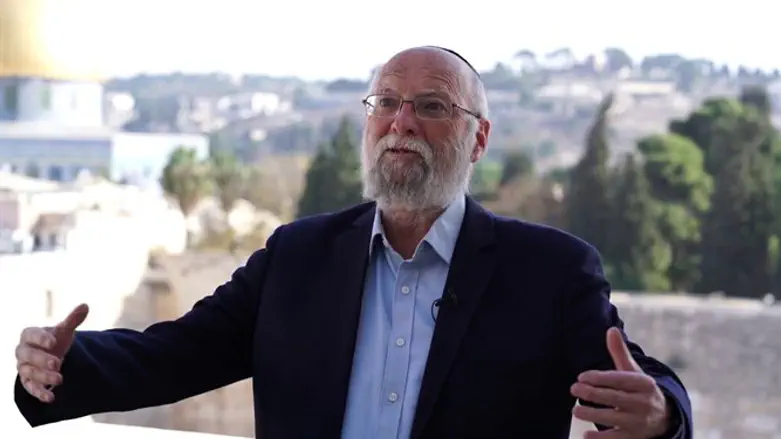
The parasha brings together, in one giant leap, the spiritual failures of our society together with its crème de la crème. On one end is the sota, the married woman, regarding whom there is valid reason to suspect that she has been unfaithful; and on the opposite end is the nazir, the God-fearing person whose spiritual thirsts are not satiated by the minimal demands of the Torah and who seeks to be even closer to Hashem by voluntarily imposing upon himself additional restrictions.
In both cases they - the nazir and the sota - must eventually appear before the Kohanim in the Bet Hamikdash.
Why?
I suggest:
Both have sinned, albeit on opposite sides of the halakhic spectrum. The immodest behavior of the sota that gives legitimate reason for suspicion is her sin. The self-imposed restrictions by the nazir imply that he believes that what Hashem had decreed in the Torah is insufficient for his spiritual needs. This too is a sin.
But, despite their individual problems, both are collaborators in a common sin, because they both energize and stimulate each other. The highly religious person sees the indecent dress and unrestrained conduct of the immodest woman; and as an act of introverted, spiritual self-defense, he closes himself off from social interaction. The woman who is more open to the world sees the anti-social behavior of the nazir, and in disgust distances herself even more from the Torah by acting in even more immodest ways.
This vicious, anti-Torah cycle is stopped when the nazir and sota are restored to normal Torah behavior. It occurs at the termination of the nazir's vows, when his hair is properly cut and he is allowed to drink of the grape, both of which are social nuances, and offers up a set number of sacrifices. The alleged adulteress returns to her normal marriage role after fulfilling her obligations in the Temple.
To sin is bad enough. However, when one becomes locked into a vicious cycle of sinning and causing others to sin, that is spiritual catastrophe.
How unfortunate we are to be witness to this phenomenon on a daily basis, where the proverbial head endlessly chases its tail around a tree.
Leading families in the galut (Diaspora) communities do not consider aliya because their spiritual mentors never raise the issue. Shabbat drashot are taken up with issues of how to be a better Jew and come closer to Hashem by not speaking during the Torah reading or other indispensable matters concerning the future survival of our nation.
The spiritual mentor, who feels happy and secure in his role as God’s envoy to the community, does not consider aliya because he has completed his commitment to the Jewish nation’s renaissance in Eretz Yisrael by sending his son to learn for one year in the Mir Yeshiva in Yerushalayim, and has a married daughter living in Bet Shemesh. In addition, it is quite obvious to him that the Yiddishkeit of the community is dependent solely upon him. And if he should leave, the walls of the local shul, mikva and day school would come tumbling down and "all the king's men would not be able to put it together again".
So, the "head" chases the "tail" and the tail pursues the head, just as the nazir is empowered by the sota and the sota is invigorated by the nazir.
Who will break the vicious cycle of the God-fearing communities in the galut? I doubt that it will be a sudden intellectual realization of the error in their clinging to the punishment of exile, nor will it be a bolt of lightning that will illuminate the heavens, as at the time of Mount Sinai. It will most probably be an unhappy conclusion stemming from a charged national and social atmosphere that will create a most uncomfortable feeling for Jews in the galut.
It could be set off by an accusation of dual national loyalty, or the pointing of a governmental finger in the direction of certain leading Jewish figures in the banking and investment sectors, or the quintessential Jewish scapegoat bearing the Magen David.
This situation, coupled with the possibility of Medinat Yisrael not being able to absorb a large number of olim in a short period of time, would create a bottleneck of catastrophic proportions for Jews having to leave the lands of their birth.
Like the nazir and sota, who eventually present themselves before the Kohanim for spiritual renewal, the Jews in the galut whose very presence there is an aveira (sin), as attested to by the prophet Yechezkel, will merit their spiritual renewal only when returning to Eretz Yisrael.
Yesterday is long gone, today is escaping by the second, and who knows what tomorrow might bring. The choice is out there - to be nazir or sota, or to be the son or daughter of Am Yisrael who has come home.
May Hashem guard and protect all Am Yisrael, especially our soldiers who are now poised at the border of Gaza.
Tehilim 32,7:
You are my hiding place;
you will protect me from pain
and surround me with songs of deliverance.
Rabbi Nachman Kahana is a Torah scholar, author, teacher and lecturer, Founder and Director of the Center for Kohanim, Co-founder of the Temple Institute, Co-founder of Atara Leyoshna – Ateret Kohanim, was rabbi of Chazon Yechezkel Synagogue – Young Israel of the Old City of Jerusalem for 32 years, and is the author of the 15-volume “Mei Menuchot” series on Tosefot, and 3-volume “With All Your Might: The Torah of Eretz Yisrael in the Weekly Parashah” (2009-2011), and “Reflections from Yerushalayim: Thoughts on the Torah, the Land and the Nation of Israel” (2019) as well as weekly parasha commentary available where he blogs at http://NachmanKahana.com